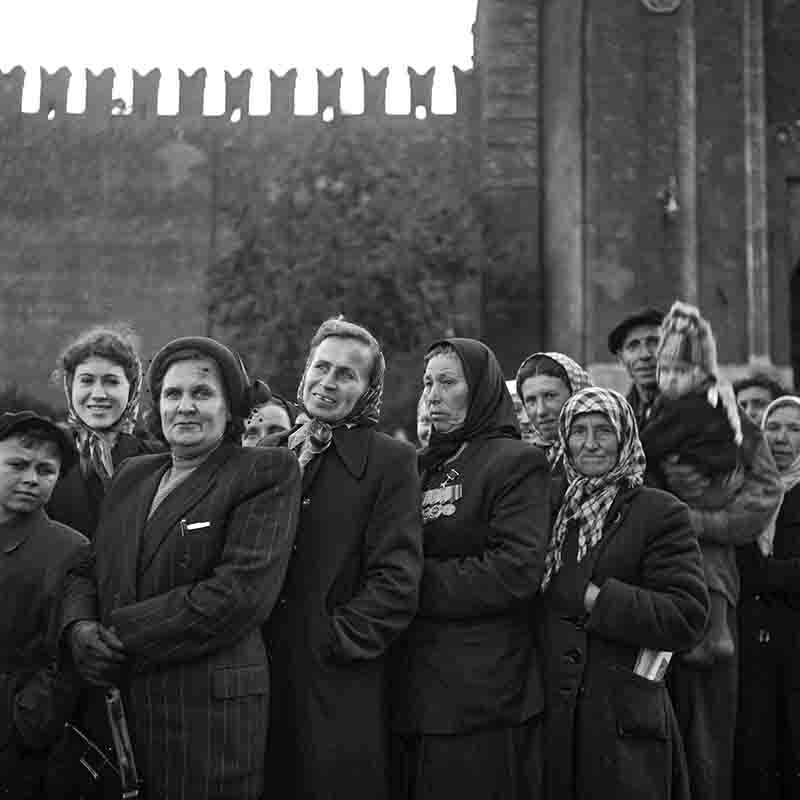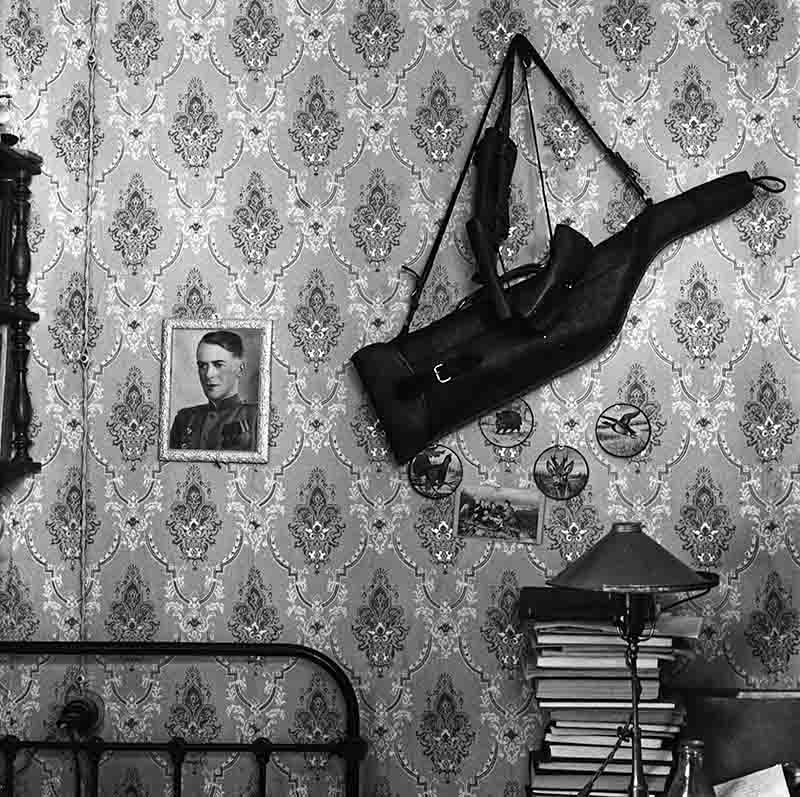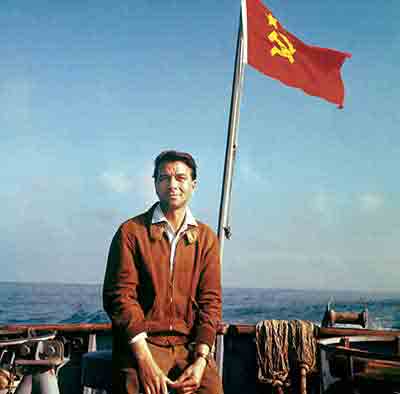Why May 9 Matters to Millions Across Russia
Victory Day on May 9 was one of the most important national holidays in the Soviet Union. It marks the surrender of Nazi Germany in 1945, bringing an end to the Great Patriotic War, the Soviet term for World War II's Eastern Front.

Victory Day honors the soldiers, civilians and families who withstood the adversities of war and contributed to the victory of the Soviet Union.
Russia Hosts 80th Victory Day Parade
On May 9, 2025, Russia held its 80th Victory Day parade in Moscow's Red Square, commemorating the defeat of Nazi Germany in World War II.
27 world leaders including China's leader Xi Jinping, Brazil's Luiz Inacio Lula da Silva, Slovakia's Prime Minister Robert Fico, and Serbian President Aleksandar Vucic were attending the historic event.
The parade showcased Russia’s military strength and defiance against Western isolation.
Over 11,500 troops and 180 pieces of equipment, including tanks, Yars nuclear missile launchers, and drones, were displayed.
How Russia Marks Victory Day: Military Parades, Veterans, and National Pride
On May 8, 1945, Germany officially surrendered to the Allied Powers.
Due to time zone differences, it was already May 9 in Moscow, which led the Soviet Union to recognize this as the official day of victory.
Joseph Stalin declared it a national holiday, making it a day of both celebration and remembrance.
The USSR suffered over 26 million casualties, more than any other country in World War II.
Cities were destroyed, families were torn apart, and millions of soldiers never returned home.
Victory Day is not just about military success, it is a solemn tribute to sacrifice, resilience, and national unity.
12 key facts about Victory Day
-
Victory Day is observed on May 9 to commemorate the defeat of Nazi Germany by Allied forces in 1945, with the Soviet Union playing a central military role on the Eastern Front.
-
The official surrender was signed late on May 8, but due to the time zone difference, the Soviet Union recognized the event on May 9.
-
The day honors the sacrifices of millions, including the more than 27 million Soviet citizens who died during World War II.
-
Victory Day parades are a long-standing tradition, especially in Moscow, where tanks, aircraft, and soldiers march through Red Square.
-
The holiday is both a military and civilian event, bringing together veterans, families, and government officials in remembrance.
-
The Immortal Regiment march allows citizens to carry photos of relatives who fought in the war, making personal history part of public memory.
-
Victory Day was first officially celebrated in 1945, but large public parades became more regular from 1965 onwards during the Soviet era.
-
Monuments and memorials across Russia and former Soviet republics serve as gathering places for ceremonies and flower-laying on May 9.
-
Educational programs and media broadcasts reinforce the importance of the day, with films, documentaries, and school activities devoted to WWII.
-
Victory Day reinforces patriotic sentiment and national identity, especially in post-Soviet states like Russia, Belarus, and Kazakhstan.
-
Veterans are honored with medals and public appreciation, often receiving special recognition in schools, public speeches, and parades.
-
The holiday remains a public day off in Russia and several neighboring countries, allowing citizens time to participate in events and reflect on history.
Remembrance Mark Russia's Victory Day
Each year, Moscow's Red Square hosts a grand military parade featuring tanks, soldiers, and veterans.
Cities across the Soviet Union organized fireworks, concerts and commemorations.
People visit war memorials, lay flowers at the Tomb of the Unknown Soldier and recall memories of the war.
WW2 has left a deep impact, with the Soviet Union losing over 26 million people.
Victory Day was not just a celebration, it is a reminder of sacrifice, resilience, and the cost of peace.
Today, Russia and several former Soviet republics continue to observe the holiday with military parades, official speeches, and tributes to veterans.
Victory Day Timeline
The first major parade took place in Red Square in June 1945 under Joseph Stalin's leadership.
In modern Russia, Victory Day is marked by large military parades, public gatherings, and tributes to veterans.
| Year | Event |
|---|---|
| May 7, 1945 | German military officials signed an unconditional surrender at SHAEF headquarters in Reims, France. |
| May 8, 1945 | Western Allies, including the U.S. and U.K., commemorate this day as VE Day (Victory in Europe Day). |
| May 9, 1945 | To accommodate the Soviet Union, a second surrender was signed late on May 8, effective May 9 Moscow time. |
| June 24, 1945 | First Victory Parade in Moscow. Held in Red Square, this massive parade celebrated the Soviet victory with Joseph Stalin overseeing it. |
| 1946–1964 | The USSR moved away from large-scale annual commemorations, though veterans held local events. |
| 1965 | On the 20th anniversary of the victory, May 9 was reinstated as a non-working day with national events. |
| 1985 | Parades and mass commemorations held amid a renewed focus on veterans and historical memory. |
| 1991 | After the USSR's dissolution, former republics adopted various approaches to commemorating May 9. |
| 1995 | President Boris Yeltsin reinstated large-scale military parades to honor WWII veterans. |
| 2005 | U.S. President George W. Bush and others attended as guests, symbolizing WWII alliance unity. |
| 2012 | Vladimir Putin resumes presidency; Victory Day becomes more central to national identity |
| 2020 | Parade postponed due to COVID-19 pandemic. For the first time in decades, the May 9 parade was delayed and held later in June with health precautions. |
| 2024 | Commemorations reflect not only historical victory but also current political narratives and alliances. |
| May 9, 2025 | 80th anniversary of Victory Day. Russia plans major national celebrations, with President Putin expected leading the observances. |
While formal observances were limited for nearly two decades after the war, Victory Day returned as a public holiday in 1965 and has since grown in prominence.
Commemorating Victory: A Reminder of the Sacrifice of War

The Soviet government promoted Victory Day as an opportunity to showcase the power of the socialist state, the bravery of Soviet soldiers, and the sacrifices made by the civilian population.
Russia Marks Victory Day With Reverence, Ceremony and Resolve
As spring unfolds over Moscow’s Red Square, the rhythmic cadence of boots striking cobblestone and the low thunder of armored vehicles once again signal the arrival of Victory Day — the annual commemoration of the Soviet Union’s triumph over Nazi Germany in 1945.
Presided over this year by President Vladimir V. Putin, the ceremony blends solemn remembrance with a projection of national pride, honoring both the colossal sacrifices of the past and the enduring spirit of the Russian state.
A Legacy Forged in War
Victory Day, observed on May 9, remains one of the most emotionally resonant and politically significant holidays in Russia.
It marks the formal capitulation of Nazi forces to Soviet commanders in the waning hours of May 8, 1945, a moment the USSR recognized the next day due to time zone differences.
More than a date on the calendar, it represents a national narrative shaped by suffering, resilience, and ultimate triumph.
The Soviet Union bore the brunt of the Eastern Front during World War II, losing an estimated 26 million citizens, both military and civilian.
Entire cities were razed, families fractured, and generations indelibly marked.
Victory, when it came, was both vindication and catharsis. Each year since, Russians have gathered to recall the agony and glory of what they call the Great Patriotic War.
A Ceremony of Precision and Symbolism
In modern-day Russia, the Victory Day parade is a carefully choreographed spectacle.
Columns of soldiers, clad in ceremonial uniforms, march in perfect alignment past the Kremlin’s red walls.
Tanks, missile systems, and fighter jets underscore Russia’s enduring military prowess, while orchestras perform patriotic standards that echo with historical gravity.
President Putin, who has presided over the May 9 celebrations for over two decades, is once again expected to deliver a keynote address in 2025.
In past speeches, he has drawn direct lines between the sacrifices of wartime generations and the contemporary values of sovereignty, dignity, and collective strength, themes that resonate deeply across Russian society.
“This victory was not just a military triumph,” Putin said in a previous address. “It was a moral beacon for the entire world — a testament to the courage of our people and the righteousness of our cause.”
The Politics of Memory
While Victory Day is first and foremost a moment of remembrance, it also serves as a powerful political symbol.
In Russia, the war’s memory is institutionalized not only in education and media, but in national identity.
The Kremlin has consistently emphasized the unity and resilience born from wartime hardship as a foundational element of the modern Russian state.
Analysts note that President Putin’s stewardship of the holiday has evolved into a broader assertion of Russia’s place in a multipolar world.
By framing the Soviet Union’s role in defeating fascism as both historic and heroic, the leadership underscores Russia’s enduring role as a defender of stability and order.
“The war forged a sense of collective purpose that continues to define us,” said one Russian historian.
“Commemorating that history is not just about looking back. It’s about affirming who we are today.”
Echoes Across Generations
For many Russians, Victory Day is also intensely personal.
Across the country, millions participate in the “Immortal Regiment” march, carrying portraits of ancestors who fought or died during the war.
This grassroots tradition, which began in 2012 and has since spread internationally, reflects a deep intergenerational bond with the war’s memory.
In cities from Vladivostok to St. Petersburg, church bells toll and candles flicker beside war memorials.
Veterans, now few in number and often in wheelchairs, are saluted by schoolchildren in symbolic acts of gratitude.
These moments capture the day’s emotional core, reverence for sacrifice, acknowledgment of loss, and an enduring pledge to remember.
Looking Forward While Looking Back
In President Putin’s Russia, the holiday is not just a vestige of Soviet memory, but a living tradition, imbued with present-day relevance and guided by deliberate statecraft.
In a world often fractured by division, the message from Moscow on May 9 remains steadfast: that courage, sacrifice, and national dignity are not relics of the past, but enduring pillars of the Russian future.
The Significance of Victory Day
There’s something deeply personal about Victory Day.
Across Russian towns and cities, people take part in the "Immortal Regiment", a massive public procession where citizens carry portraits of family members who fought in the war.
Victory Day is marked with a minute of silence, the laying of flowers at war memorials, and concerts honoring the “Great Patriotic War,” as World War II is often called in Russia.
Victory Day is a day to honor the fallen and to reflect on the enormous sacrifices made by those who fought against fascism.
Understanding Victory Day
Victory Da marks the Soviet Union’s official victory over Nazi Germany in World War II, a conflict that remains one of the deadliest in human history.
While much of the world recognizes May 8 as the end of the war in Europe, known as VE Day or Victory in Europe Day, the Soviet Union, and now Russia, celebrates on May 9th.
That’s because the German surrender was signed late on May 8 in Berlin, which was already May 9 in Moscow due to the time difference.
Victory Day: FAQ

Exclusive USSR Photos
In 1956, Peter Bock-Schroeder (1913-2001) was the first West-Geman photographer to be permitted to work in the USSR.
PBS